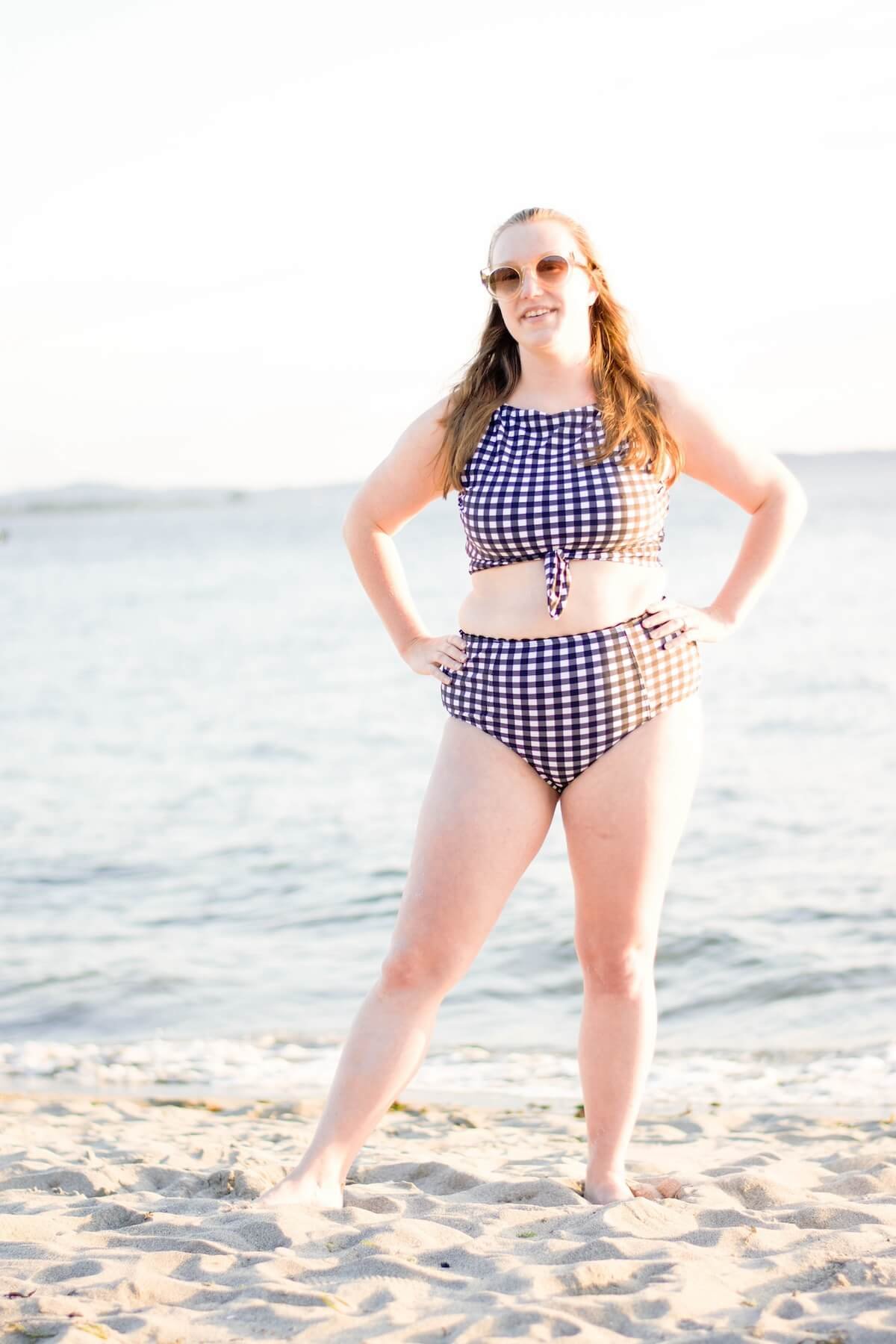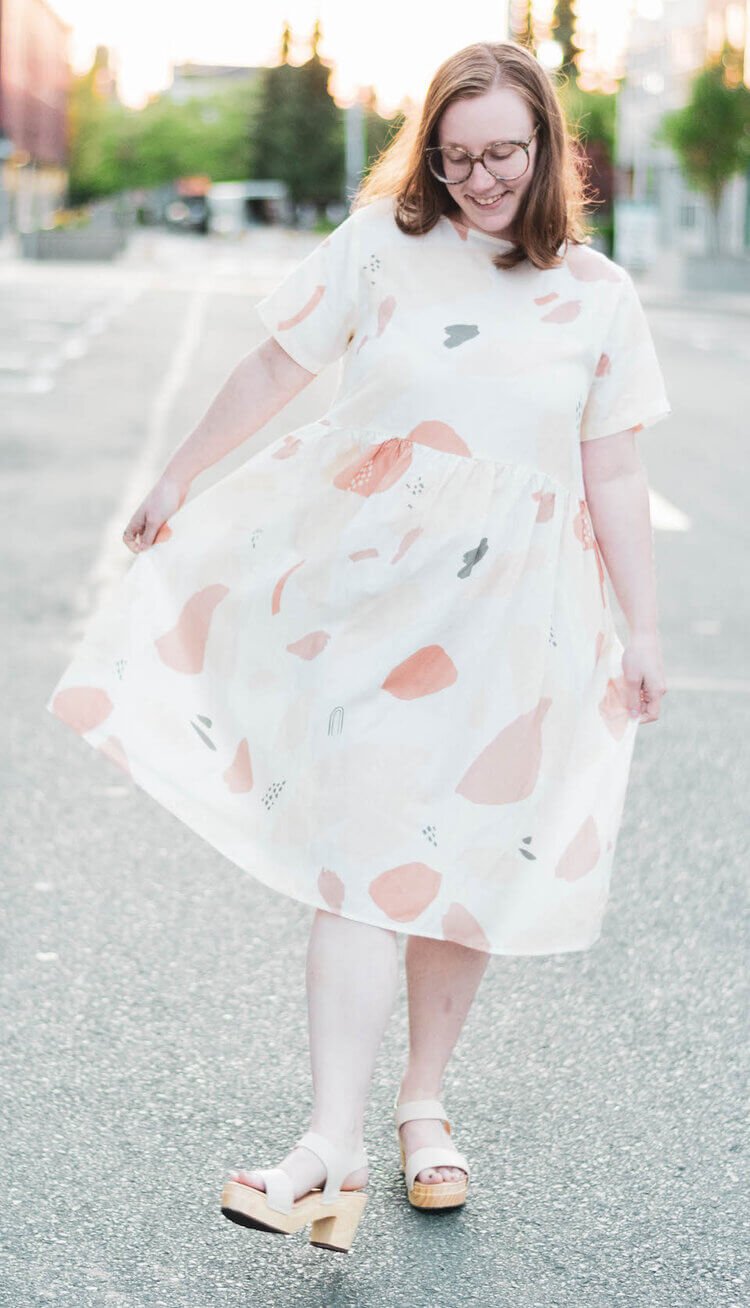The Best Upcycled & Recycled Sweaters for Women
With the weather cooling down it's time for cozy sweaters and apple cider! While sweaters are seasonal clothing due to the weather, your sweaters should be crafted to last for years.
However, if you’ve worn out your favorite sweaters – which is very likely given our work-from-home, pandemic fashion – you don’t have to buy something new.
Or to be more accurate: you don’t have to buy something virgin. Upcycling your current sweater is an option (especially if it’s only got a few rips and tears you can mend, and you’re just wearing it around the house).
Purchasing one from recycled materials is another. But what exactly is the difference between the two?
Let's explore upcycling, recycling materials, and some sustainable sweater brands using eco-friendly materials.
The Difference Between Recycled and Upcycled Clothing
Recycling refers to old or used materials being broken down and made into a “new” material. When it comes to clothing, recycled polyester (rPET) is a common example.
However, recycled clothes are not always made from fabrics that have been broken down and re-spun.
It can also refer to breaking down plastic bottles or old fishing nets to make threads that are spun into a new fabric.
Upcycling is also about repurposing old or used materials, but they are reused or reimagined, giving it a new life instead of being broken down.
It can be as simple as turning your old mayo jar into decorative plastic pots by painting it and grabbing the hot glue gun.
When it comes to clothes it can be as simple as mending an old t-shirt, but it can also be as fun and creative as jazzing up a worn sweater with old buttons and colorful patches, making shorts out of pants, or turning something into a different item all together like turning old jeans into a bag.
Upcycling is particularly great because it's something that can easily be done at home with a sewing machine and pattern pieces found online.
If you have an old sweater that is worn out you can easily upcycle it into fingerless gloves, leg warmers, or a pair of mittens to keep your favorite sweater in your closet.
Recycling and upcycling are sustainable and eco-friendly approaches to your closet, although recycled materials can sometimes be a lower quality because fibers become shorter when broken down.
Upcycling is also more efficient because it does not require the energy and resources it takes to break down old materials and create something new.
But whether purchasing recycled materials or seeking upcycling solutions, both are becoming increasingly popular due to their environmental benefits.
Environmental Benefits of Recycling and Upcycling Clothing
Upcycling and recycling’s primary environmental benefit is that it keeps waste out of landfills and incinerators.
By providing options to recycle, or creative ideas to upcycle, clothes are kept out of the trash which goes to landfills and incinerators, creating pollution and using up space.
More waste is being generated than ever before, so we urgently need to find and encourage ways of keeping clothes out the trash. We've even got a guide on how where to recycle clothes.
Using existing materials to produce clothing can also take pressure off natural resources.
When talking about buying something new that’s virgin (as opposed to something new that’s made from recycled or upcycled materials), it’s referring to items made from natural resources in their raw form.
This requires extractive and destructive practices that impact local communities, wildlife, and the planet as a whole.
Fossil fuels like coal, oil, and gas are burned for energy, which are used in industrial and manufacturing processes. This includes making new materials from recycled ones.
However, fossil fuels are also used to make virgin materials such as synthetic fabrics (e.g. polyester, nylon, acrylic), so using existing synthetics like old clothes, plastic bottles, and fishing nets, helps conserve natural resources.
What’s more: by keeping fossil fuels in the ground, pollution and carbon emissions are reduced – important steps in mitigating human-induced climate change.
7 Recycled and Upcycled Sweater Brands to Shop
If you're unable to upcycle and repair your favorite sweaters and are in need of some new sweaters refrain from heading to your favorite department store and instead check out these eco-friendly brands that use recycled materials. These sweaters are sure to keep you cozy during the holiday season.
This post does contain some affiliate links which means The Honest Consumer may receive a commission if you decide to purchase, however, at no additional cost to you!
Tradlands Tri-Blend Sweaters
Tradlands focuses on creating pieces customers can wear with everything and live in for years to come. Their timeless pieces feature a variety of neutral style and bold style perfect for fun fair fashion.
Haven Mock Neck Sweater by Tradlands
Select winter and fall tops from Tradlands feature a blend of alpaca, recycled polyester, and wool. Along with their blended sweaters, Tradlands also carries sweaters made with natural fibers such as cotton.
Tradlands sweaters range from $139-$227. Tradlands also has a pre-loved section where consumers can shop sweaters that have been gently worn for lower prices.
Eileen Fisher’s Recycled Cashmere Sweaters
Eileen Fisher crafts incredibly high quality and high end garments while using socially responsible practices. This is a brand that values transparency through out their supply chain.
Eileen Fisher crafts a lot of garments using sustainable materials such as organic cotton, recycled polyester, recycled cashmere, & more.
Along with using eco-friendly materials, this Certified B Corporation has programs designed to make customers more aware of the environmental impacts of fashion. The ReNew and Waste No More projects are two ways Eileen Fisher is educating shoppers.
Eileen Fisher sweaters made with recycled materials feature recycled cashmere creating a soft and luxurious feel ranging from $398-$498. However, sometimes you can find a good deal on Eileen Fisher clothing at Nordstrom Rack. I was able to find an Eileen Fisher wool sweaters there for $70.
tentree’s Recycled Polyester and Organic Cotton Sweaters
For comfort and coziness, tentree’s knit sweaters, cardigans, and quilted fleeces made from a blend of recycled polyester and organic cotton are a perfect fit. tentree’s sustainable sweaters range from $78-$118.
tentree is all about climate action, using sustainable materials and planting ten trees for every purchase made – just in case you were wondering where their name comes from.
Roots Outdoor Sweaters Made from Recycled Materials
Roots is a premium outdoor lifestyle brand that embodies a comfortable cabin-meets-city style, made for your everyday adventures no matter where you're headed next.
Select sweaters are made from recycled cotton yarn knit blend or feature recycled polyester. Their men’s and women’s sweaters range from $62-$108.
Patagonia’s Cozy Sweaters for Outdoor Activities
Patagonia has been a leader in sustainable clothing for many years. Specializing in outdoor apparel, they offer hoodies and pullovers made variously with recycled polyester, recycled Synchilla polyester fleece, and cotton scrap, finished with low-impact dyes.
Featuring sweaters for both men and women, these garments range from $99-$250. Incredibly active on the environmental front, they also engage their consumers in worthy causes by allowing them to offer their skills, as well as by discovering events and petitions.
prAna’s Recycled & Organic Sweaters
Working with recycled polyester, or a blend of rPET with organic cotton, TENCEL, or wool, prAna has a warm and stylish selection of sweaters, tunics, hoodies, pullovers, ponchos, sweatshirts, and shackets (a shirt-jacket crossover) that are made from recycled materials. prAna features sweaters for men and women ranging from $60-$130.
By partnering with The Renewal Workshop they aim to keep their production cycle circular, sending damaged or returned inventory to be recycled and upcycled.
If you're looking for an affordable way to support sustainable style finding a secondhand store and picking out a thrift store sweater is also a good choice.
What to Look for in Recycled and Upcycled Sweaters
Not all sweaters are created equal when it comes to recycled materials. These tips will help you learn what to look for when shopping for upcycled sweaters.
When shopping for recycled or upcycled sweaters, start by knowing the difference. Most of what you’ll find will be sweaters made from recycled fabrics. Upcycled sweaters, strictly speaking, are old sweaters that have been mended or jazzed up; turned into completely different items (like mittens, pillows, or beanies), or a sweater made out of sweaters.
Let’s get the cons and greenwashing pitfalls out the way next. Recycled materials have weaker fibers, resulting in potentially lower quality. This is usually amended by blending it with stronger fabrics like organic cotton. Remember that even recycled clothing (and upcycled ones too, for that matter) still shed microfibers. Be mindful of which dyes are used; even a recycled or upcycled product may have been treated with toxic chemicals.
When shopping for sweaters be sure to note the care instructions. A lot of sustainable clothing brands recommend you hand wash their clothes and refrain from fabric softener as these eco-friendly practices help the fibers stay in tact longer.
Look for give-back, trade-in, and second-hand platforms. There are brands that incorporate this into their business, allowing you to return clothes either for donation, recycling, or upcycling. Some will even give you the option of purchasing from the platform, which is where may find upcycled products.
Be sure to consider the size of the sweaters. For me personally I like cozy oversized sweaters. Since sizing runs different for all sweater brands I like to order a size up sometimes.
Support sustainable brands making unique items. Brands producing small batches also help you create signature styles while cutting down on waste, as do those using deadstock fabric or making use of their scraps by upcycling them into something new or different. And if they’re implementing eco-friendly practices in other areas of their business, even better!
Hopefully this guide gave you some starting points if you’re looking for more sustainable sweaters for fall and winter!
For more tips & tricks on sustainable living be sure to follow The Honest Consumer on social media, subscribe to our newsletter, & check out the Ethical & Sustainable Brand Directory.



















